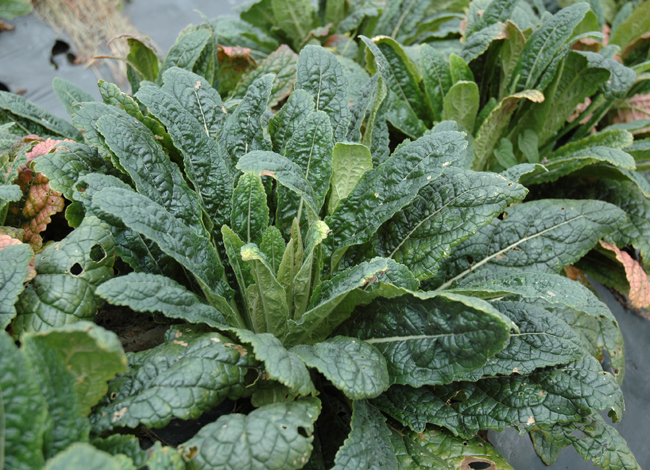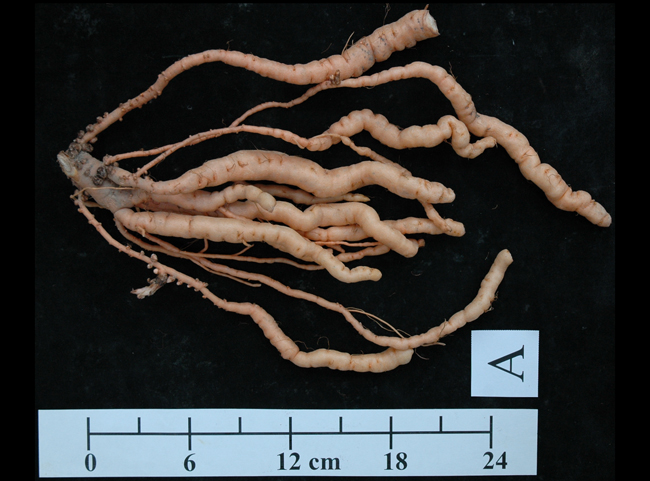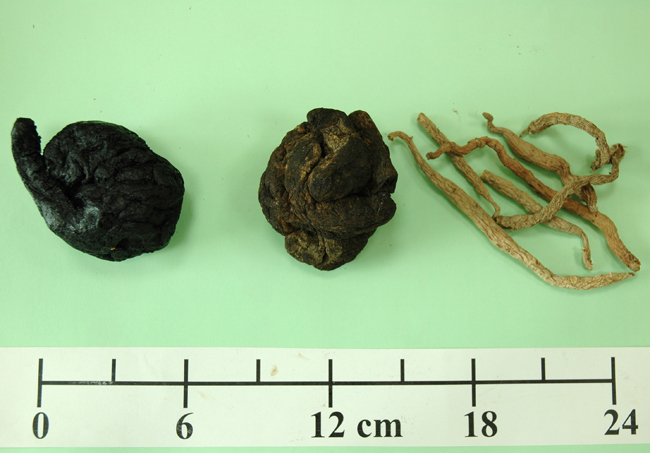Innovative techniques
DiHuang (Rehmannia glutinosa) is one of the herbs extensively used with other herbs as tonic soup or pills in traditional Chinese medicine. The raw or cured roots that are used for medicinal purpose have concentrations of rehmannia glutinosa polysaccharide, stachyose, and iridoid glucoside (catalpol). Raw DiHuang with high catalpol concentration has been reported to have effects in amelioration of diabetes, secretion of gastric fluid and saliva, and improvement of diuretic function. Both raw and cured DiHuang roots in Taiwan market are mainly imported from China; there is no production of DiHuang in economic scale in Taiwan. Because of the steadily increasing demand for functional foods and medicinal diets that improve the quality of life, it is expected there will be an interest in the production of DiHuang in the near future. For that very purpose, TARI has successfully established the propagation and cultivation techniques of DiHuang, which is packed with functional components, in lowland Taiwan.
The production of DiHuang is limited in Taiwan due to several factors. First, the variation of genetic resources is limited. Second, long-term asexual propagation of root segments leads to its decline of production and quality because of viruses. Third, root sour soft rot and spindle roots. TARI’s recent achievements in the development of cultural practices for raw DiHuang roots include: 1) Seed production after hand pollination of plants, which are derived from roots that have been previously temperature-treated to regulate flowering; 2) Healthy and homogeneous seedling production through tissue culture system; 3) Regulation of planting and harvesting times to stabilize root harvesting; and 4) Assessment of stachyose and catalpol contents, as quality indicators, by newly developed analytical techniques.
Using TARI’s established cultural practices, DiHuang can be harvested 8 to 10 months after planting in lowland Taiwan. The average fresh root yield is 400-600 g/plant despite small tap storage root with many spindle roots. Chemical analyses revealed that fresh DiHuang produced by TARI-established methods contain catalpol and stachyose at 13-55 mg/g and 300-500 mg/g, respectively, on dry weight basis. The catalpol and stachyose contents of the TARI-produced DiHuang are higher than those of the marketed DiHuang: catalpol at 2.32 mg/g and stachyose at 260 mg/g for raw DiHuang; catalpol at 3.54 mg/g and stachyose null for cured DiHuang. The TARI’s established method for growing DiHuang has a great potential to mobilize DiHuang production in Taiwan.




